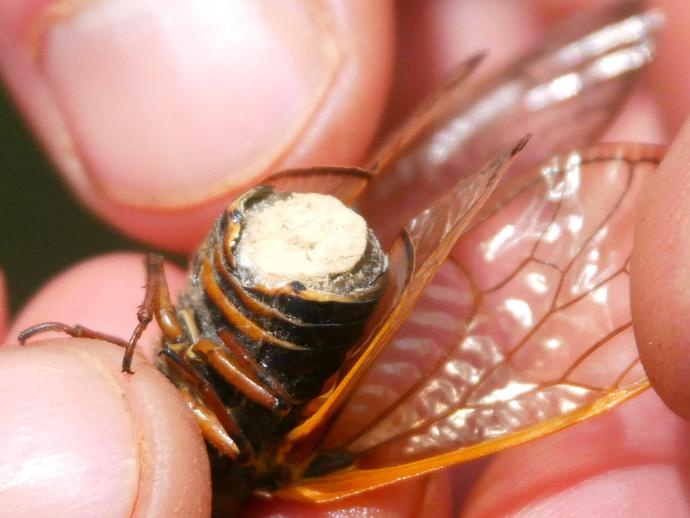June 17, 2020
Hey everybody! Who wants to learn about something gross?!?
This is one of our three species of periodical cicada in Brood IX, Magicicada septendecim. However, we're not going to talk about the cicada; today's post is about the odd white substance on its abdomen.
That white substance is a fungal pathogen (disease-causing fungus) called Massospora cicadina. Don't worry, it's not harmful to humans, and in fact, it only targets periodical cicadas; annual cicadas are unharmed.
This is a very unusual fungus, and it's actually believed that it may have the longest life cycle of ANY fungus. It can infect periodical cicadas during their first year of life, but it will remain dormant until they emerge from the ground and molt after 13 or 17 years underground!
In the early stages of infection, the fungus is not visible and the cicadas will behave fairly normally; however, the fungus renders both males and females infertile. Over time, the fungus will cause sections of the cicada's abdomen to simply fall off, revealing a white plug of fungus. In many cases, the entire abdomen will completely fall off!
While this is all pretty horrifying, Massospora cicadina may play an important role in controlling cicada populations and preventing cicadas from causing too much damage to tree roots while they're in the nymph stage. Nature always finds a way, even if it is fairly disgusting. #BenInNature
This post brought to you by VMNH Supporters Linda and Roscoe Reynolds.
ABOUT THIS POST
Social distancing can be difficult, but it presents a great opportunity to become reacquainted with nature. While he is working from home, Administrator of Science Ben Williams is venturing outdoors each day to record a snapshot of the unique sights that can be found in the natural world.
NATURE PHOTO IDENTIFICATIONS
If you discover something in nature that you would like help identifying, be sure to message us right here on Facebook with a picture (please include location and date of picture) and we'll have our experts help you identify it!

 Hours & Admissions
Hours & Admissions Directions
Directions

